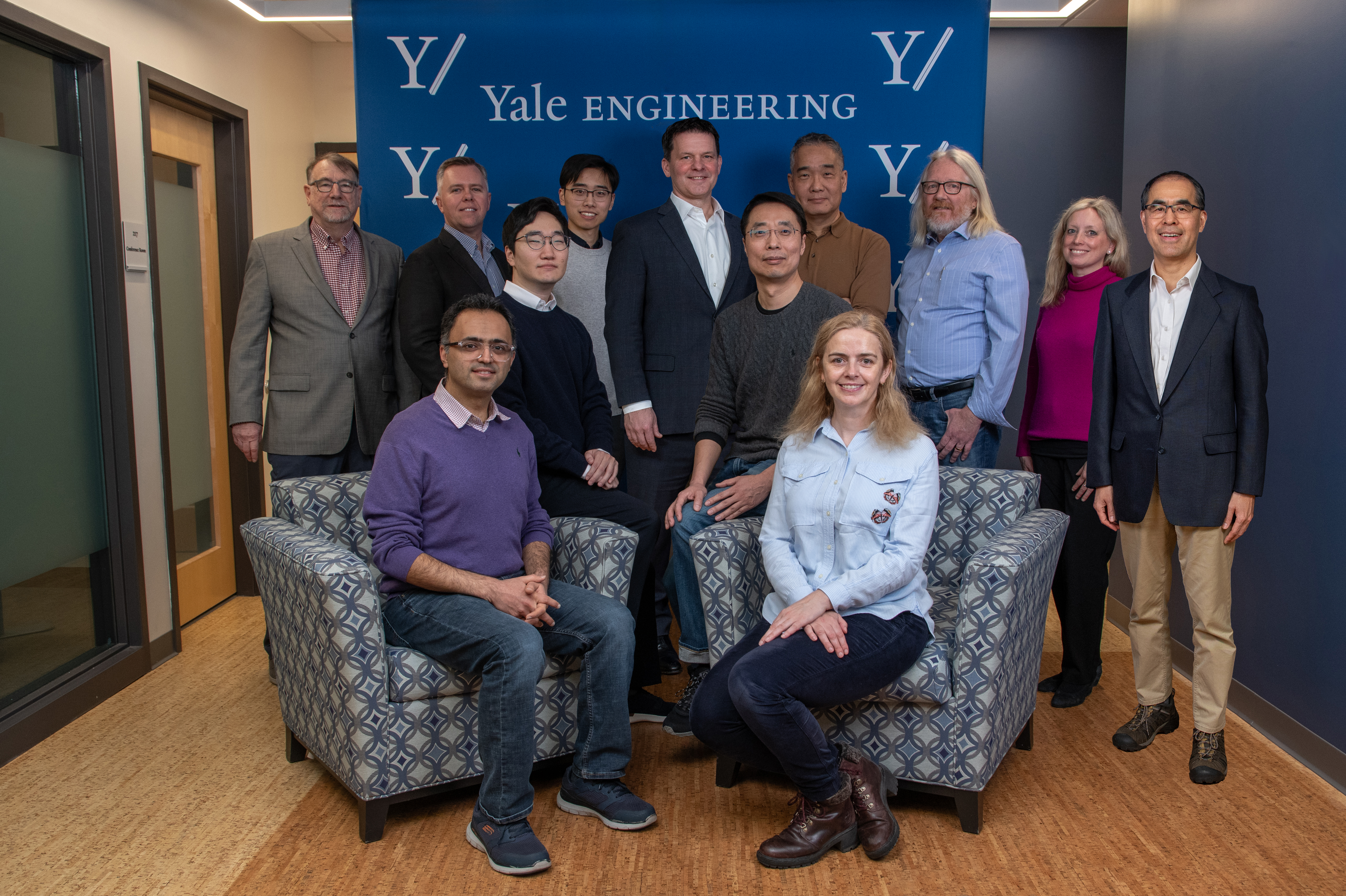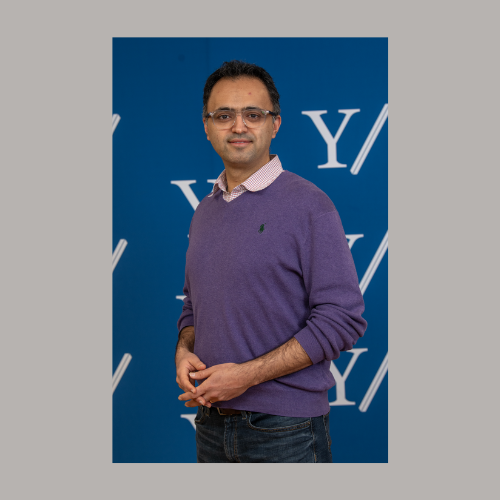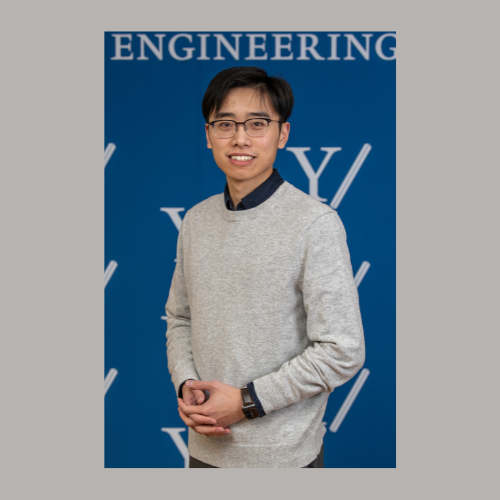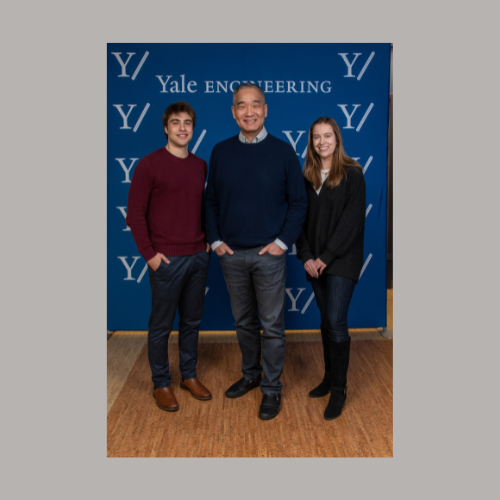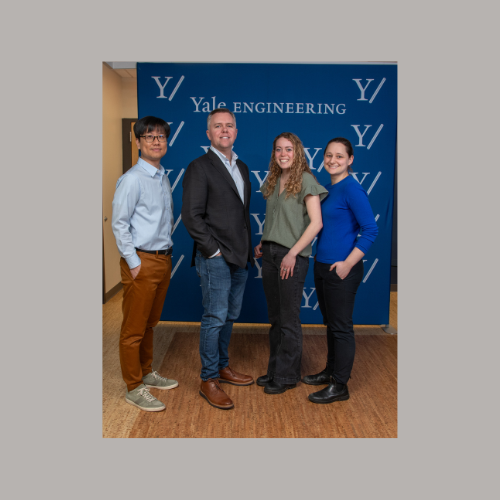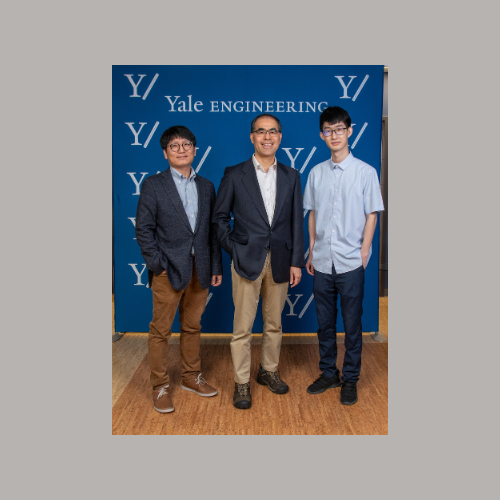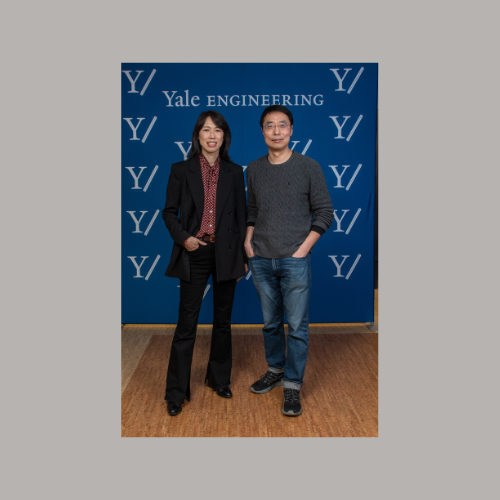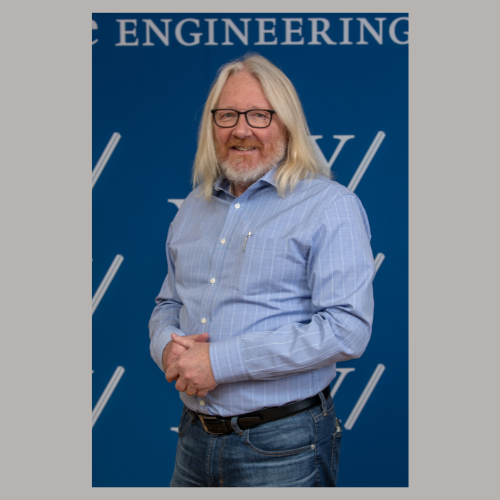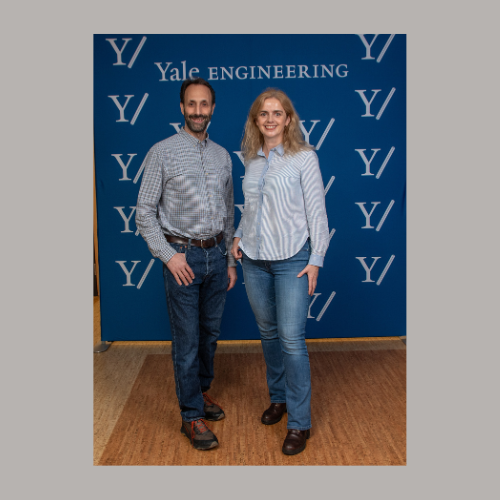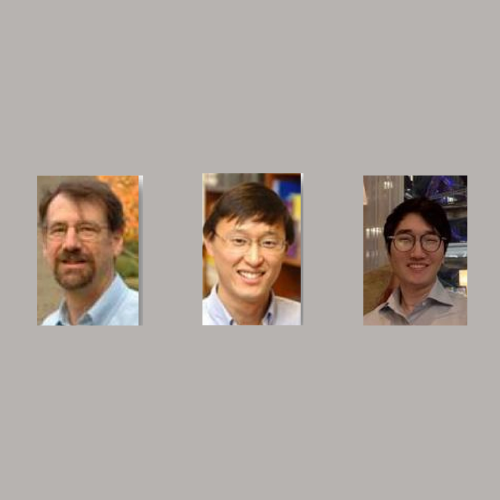2023 - 2024 ROBERTS FUND AWARDED PROJECTS

Advancing Novel PFAS Treatment Technologies from Lab to Commercialization
Project team
John Fortner, Lydia Watt, Susanna Maisto, Seung Soo Lee, PhD, Öze Durak
Pollution from PFAS - the harmful substances also known as “forever chemicals” - is now a globally ubiquitous and a serious public health threat. Affecting millions of people through tap water alone, PFAS is one of the emerging water contaminants targeted by the U.S. government’s recent $10 billion effort. The team led by John Fortner has developed technologies to separate and destroy PFAS at point-of-use water treatment technology companies, municipal water treatment facilities, and other locations. In experiments, the technology has significantly outperformed conventional PFAS treatment approaches.

Scaling Catalytic Membranes for Oil & Gas Produced Water Treatment- Industrial wastewater treatment and reuse
Project team
Jaehong Kim, Claire Chouinard, James Licato
As the cost of water rises due to global challenges, reusing and recycling water has become inevitable for industries in the U.S. and around the world for their sustainable growth. Technologies that can actually destroy contaminants are ideal, but they require major breakthroughs to become viable and cost-effective.
Commonly employed in many industries, advanced oxidation processes (AOPs) are designed to destroy water pollutants, but current AOPs can’t achieve complete destruction of contaminants. A team led by Jaehong Kim has developed a new catalytic material and treatment scheme that demonstrates near-complete destruction of organic pollutants with the highest-ever recorded efficiency at a low operating cost.

Data-Centric Quantum Computing
Project team
Yongshan Ding, Shifan Xu
While quantum processing units (QPUs) have advanced significantly, the challenge of efficiently translating classical data into a format compatible with QPUs hinders the deployment of quantum applications in data-driven fields like machine learning, optimization, and scientific computing.
Yongshan Ding has created a solution that provides user-friendly access to cutting-edge quantum random access memory (QRAM) - a technology that’s pivotal for converting classical data into quantum data, a crucial but challenging step for practical quantum computing. This unique platform serves as a valuable testing ground to explore the commercial potential of various quantum applications.

A manufacturable process for a material to combine logic and memory in semiconductor devices
Project team
Charles Ahn, Kidae Shin, Fred Walker
Materials technology for current microelectronics, based on conventional silicon and insulating oxides, is approaching its physical limits. At the same time, demands for electronic devices with superior processing capabilities and lower power consumption are ever increasing. Charles Ahn’s research group is developing materials technologies capable of being manufactured on a large-scale that would address current limitations of today's logic and memory devices. With such functionalities as non-volatility, extremely low energy consumption, and neuromorphic computing capabilities for AI applications, the approach has the potential to advance semiconductor technology, attracting the interest of semiconductor companies that are actively pursuing new materials systems.

AI in Your Pocket
Project team
Amin Karbasi, Insu Han, Amir Zandieh
Despite significant advancements, democratizing large AI models remains a challenge. The development of such models demands thousands of GPU training hours, incurring costs in the hundreds of thousands of dollars, limiting powerful AI models to organizations with substantial resources. Led by Amin Karbasi, this project aims to make AI cost-effective, enabling individuals to run them on their edge devices offline, fostering broader accessibility and unlocking their full potential. The solution enables the development of larger AI models without increasing the computational budget. This expansion of model sizes, as demonstrated in generative models like ChatGPT, unlocks new emergent properties of AI, like human-like reasoning abilities, and more.

Krania: Decentralized Machine Learning as a Service
Project team
Ben Fisch, Josh Beal
Due to the centralization risks of machine learning as a service (MLaaS) and the high cost of running large language models on consumer-grade hardware, there has been growing interest in decentralized inference networks, which crowdsource the computation over many participants. Two opposing challenges are incentivizing participation and trusting the results of computation. Participants may cut costs and claim the rewards by faking results rather than computing them accurately. Ben Fisch and his research team have created Krania – a system addressing these issues by employing verifiable distributed computation to validate results and streamline efficiency, demonstrating the potential for secure, decentralized MLaaS.

Towards manufacturable short-wave infrared (SWIR) vertical-cavity-surface-emitting lasers (VCSELs)
Project team
Jung Han , Jacob Tarn, Rebecca Levonian, Jin-ho Kang, Rami Elafandy, Chenziyi Mi
Vertical Cavity Surface Emitting Lasers (VCSELs) are critical in 3D optical sensing and data communications but are currently limited to an 800-1000 nm near infrared (NIR) range due to material constraints. Extending VCSELs into the 1300-2300 nm Short-Wave Infrared (SWIR) range could revolutionize this technology, enhancing data transmission speeds, fiber optic reach, and improve eye safety in free-space applications. Jung Han aims to commercialize SWIR VCSELs by advancing photonic technologies, bringing significant improvements to fields like 3D sensing, facial recognition, augmented and virtual reality, autonomous vehicles, biophotonics, and high-speed optical links.

Leibniz AI
Project team
As many have experienced, a paramount challenge with large language models is their propensity for "hallucinations," or generating plausible but false or misleading information. This is particularly problematic in the legal domain, where accuracy is critical. To address this, Piskac and collaborator Scott Shapiro from the Yale Law School are developing reliable and trustworthy legal chatbots (“lawbots”) to assist with legal inquiries by implementing formal verification methods to mathematically validate the responses. This verification aims to ensure that the lawbots are accurate and reliable, thereby establishing a new standard of dependability in AI assistance for legal experts and democratizing legal knowledge for ordinary citizens.

Geometric Deep Sensing Technology
Project team
Fengnian Xia , Ting Li
The rapid growth of autonomous vehicles, biometric systems, and robotics has created an urgent need for advanced optical sensors that are compact, capable of handling large amounts of data, and AI-compatible. Traditional sensors, however, fall short in meeting these modern requirements. Fengnian Xia’s innovative and proprietary technology – geometric deep sensing – looks to fill this void by bringing this versatile and intelligent sensing solution to market. The design and manufacturing of these cutting-edge semiconductor devices will meet the critical need for smaller, smarter, and highly adaptable optical sensors, unlocking new commercial opportunities in a rapidly evolving landscape.

EverShield
Project team
Mark Saltzman, Fan Yang, Jennifer Ayres, Bruce Cao, Gregory Kopf
There is a pressing need for more convenient and efficient treatments for individuals who currently rely on frequent medications and injections. This is especially relevant for HIV-positive individuals, and those at risk of HIV exposure. Additionally, improved drug delivery systems could greatly benefit conditions like endometriosis and chronic diseases requiring sustained medication.
Saltzman’s Evershield technology offers a long-acting, biodegradable polymer implant that ensures consistent release of therapeutic agents over extended periods. This innovative approach utilizes a safe, degradable polymer compatible with multiple active pharmaceutical ingredients and has proven effective for delivering contraceptive agents and anti-retrovirals. While addressing reproductive health needs, this technology also holds promise for treatments for glaucoma, macular degeneration, osteoarthritis, chronic pain management, and other applications.
Additional photos
